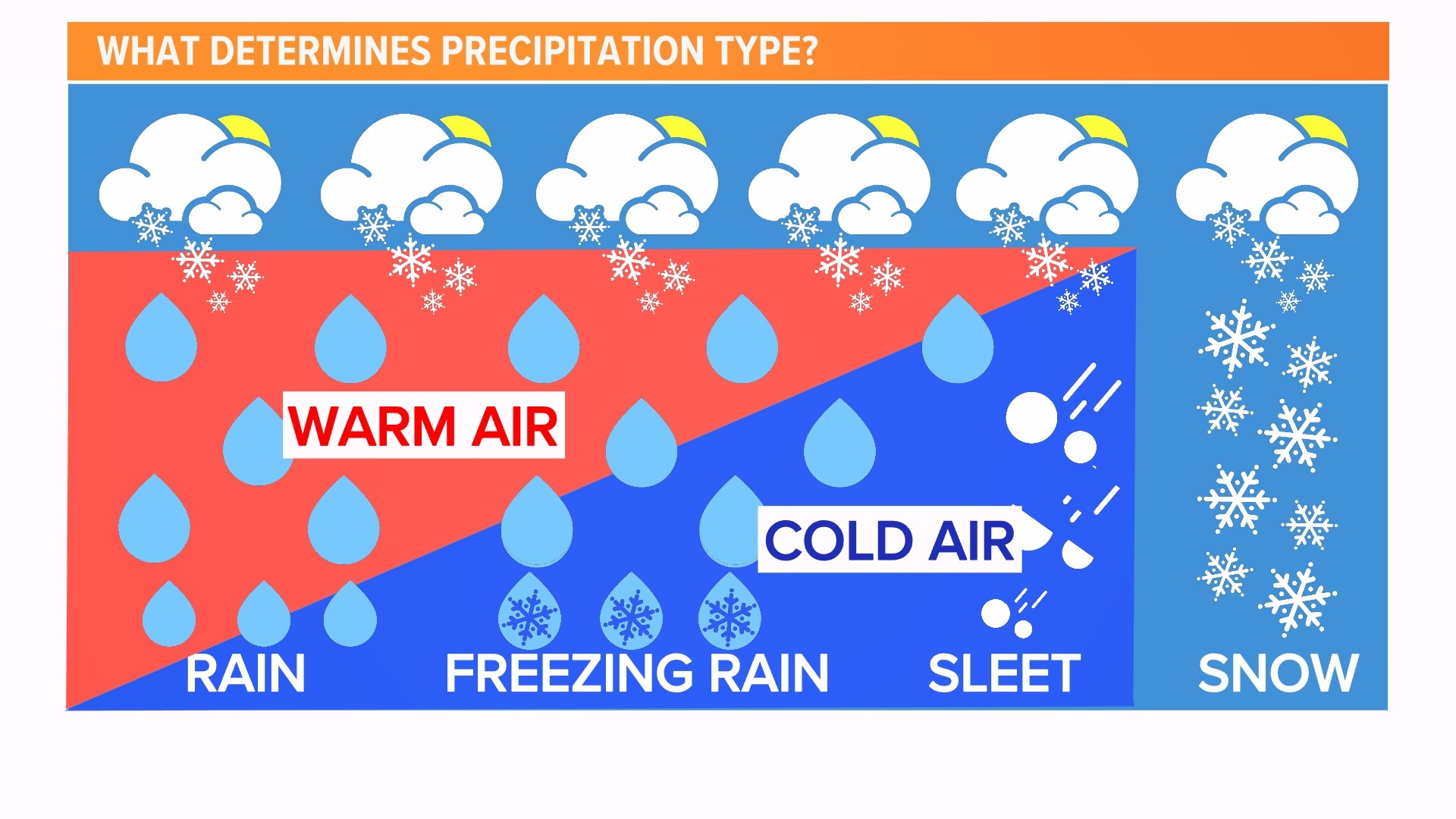Understanding A Wintry Mix Of Rain And Snow

Table of Contents
What Exactly is a Wintry Mix?
A wintry mix refers to precipitation that falls as a combination of rain, snow, sleet, and freezing rain. The exact combination varies widely, making it a challenging weather event to predict accurately. The key factor influencing the type of wintry mix you experience is the temperature gradient throughout the atmosphere. Small changes in temperature at different altitudes can dramatically alter the precipitation type, leading to a chaotic mix of weather conditions at ground level.
-
Temperature at ground level: This is the most crucial factor. If the ground temperature is below freezing (32°F or 0°C), any precipitation will likely freeze, resulting in snow, sleet, or freezing rain. If the ground temperature is above freezing, you'll experience rain.
-
The presence of a warm layer aloft: A warm layer of air higher in the atmosphere can melt falling snow. If this melted snow then falls through a colder layer closer to the ground, it refreezes, resulting in freezing rain or sleet.
-
Sleet formation: Sleet forms when snowflakes melt completely within a warm layer of air and then refreeze into small ice pellets as they fall through a layer of sub-freezing air near the ground.
-
Understanding atmospheric layers: Meteorologists carefully analyze these atmospheric layers using weather balloons and radar data to predict the type and intensity of a wintry mix. This is why predicting a wintry mix precisely can be challenging; even small variations in temperature profiles can significantly impact the resulting precipitation.
Identifying the Different Types of Winter Precipitation in a Mix
A wintry mix can contain a combination of several types of winter precipitation. Let's break down each one:
Snow
Snow is characterized by its fluffy, crystalline structure. The accumulation of snow during a wintry mix depends heavily on the temperature. In a warmer wintry mix, snow may melt quickly, resulting in little to no accumulation. In colder wintry mixes, significant snowfall can occur. The moisture content of the air also impacts the snow's density and accumulation.
Sleet
Sleet consists of small, transparent ice pellets that bounce when they hit the ground. They form when snowflakes melt completely in a warm layer of air, then refreeze into small, hard pellets as they fall through a sub-freezing layer closer to the surface. Sleet can be very difficult to drive on, as it creates a layer of potentially slippery ice.
Freezing Rain
Freezing rain starts as liquid rain but freezes upon contact with surfaces that are below freezing (0°C or 32°F). This creates a very dangerous, transparent glaze of ice that coats everything – power lines, trees, roads, and cars – making travel extremely hazardous. Freezing rain is responsible for many power outages and accidents during wintry mixes.
Rain
In a wintry mix, rain often coexists with other forms of precipitation. The presence of rain indicates that the ground temperature is above freezing, at least temporarily. However, the temperature fluctuations characteristic of a wintry mix mean that rain can quickly turn to freezing rain or sleet as temperatures drop.
Safety Tips During a Wintry Mix
A wintry mix presents several safety hazards. Here are crucial tips for staying safe during this type of weather event:
Driving Precautions: Avoid driving if at all possible during a wintry mix. If you must drive, significantly reduce your speed, increase your following distance substantially, and ensure your vehicle is equipped with winter tires and an emergency kit. Be especially cautious on bridges and overpasses, as these areas freeze first.
Power Outages: Wintry mixes often cause power outages due to ice accumulation on power lines. Prepare for this possibility by having extra batteries, flashlights, a battery-powered radio, and a readily available source of heat (like a fireplace or a portable generator – used according to manufacturer's instructions).
Home Safety: Prepare your home in advance. Clear walkways and driveways of snow and ice frequently. Have a well-stocked emergency kit readily available, including water, non-perishable food, medications, and blankets. Be mindful of potential hazards, such as falling tree limbs, which can break under the weight of accumulated ice.
- Check weather forecasts regularly: Stay updated on changing conditions.
- Stock up on essential supplies: Prepare for potential disruptions.
- Dress warmly in layers: Protect yourself from the cold and wet conditions.
Conclusion
Understanding the complexities of a wintry mix is essential for staying safe and prepared. From identifying the different types of precipitation – snow, sleet, freezing rain, and rain – to adopting necessary safety precautions, being informed can significantly mitigate potential risks. Remember to check your local weather forecast frequently and always be prepared for a "wintry mix" with its unpredictable nature. Stay safe and informed by understanding the intricacies of a wintry mix and by preparing your home and vehicles accordingly. Don't let a wintry mix catch you unprepared; plan ahead for the safety of yourself and your loved ones. Being prepared for a wintry mix means you're ready for a variety of winter weather challenges, ensuring your safety and security.

Featured Posts
-
 Alwlayat Almthdt Thlathy Jdyd Fy Qaymt Bwtshytynw
May 21, 2025
Alwlayat Almthdt Thlathy Jdyd Fy Qaymt Bwtshytynw
May 21, 2025 -
 From Doubt To Glory Analyzing Liverpool Fcs Klopp Years
May 21, 2025
From Doubt To Glory Analyzing Liverpool Fcs Klopp Years
May 21, 2025 -
 Official Partnership Aims Group And World Trading Tournament Wtt
May 21, 2025
Official Partnership Aims Group And World Trading Tournament Wtt
May 21, 2025 -
 Why Did D Wave Quantum Qbts Stock Price Increase On Monday
May 21, 2025
Why Did D Wave Quantum Qbts Stock Price Increase On Monday
May 21, 2025 -
 Effecient Bankieren In Nederland Gebruik Maken Van Tikkie
May 21, 2025
Effecient Bankieren In Nederland Gebruik Maken Van Tikkie
May 21, 2025
